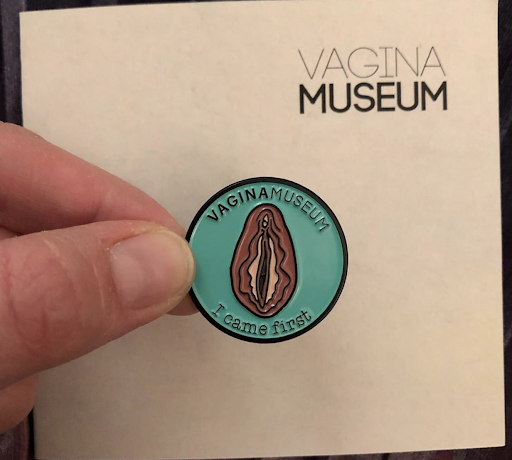This Vagina Museum In London Hits All The Right Spots
Yes, you read that right! There is a museum dedicated solely to the vagina. The Vagina Museum located in London, UK is the world’s first brick and mortar museum about gynaecological anatomy. It was founded to combat the lack of representation about gynaecology in the world, both in culture and heritage. The museum’s founder, Florence Schechter, decided to establish one, when she found out there was a penis museum in Iceland, the Icelandic Phallological Museum.
(Note: The correct term for the outer part (all external genitalia) of the vagina is the ‘vulva’. However, assuming the curators of this museum wanted to popularise it according to what people already know, the word vagina has been used.)

Why do we need a vagina museum anyway?
Don’t all vagina-owners just need to squat in front of a mirror to explore what the vagina is about? To answer this, we have to think about why humans build monuments in the first place. Giving physical space, time, money and effort into expressing an idea gives it importance. Further, by making it publicly accessible, all this collected information can be freely shared. Museums, by displaying artifacts of any kind, educate and inspire you, and most importantly for us here- instill within you a sense of identity.
For any vagina owner to walk into a museum such as that- to see a body part you have always been told you must hide- to see it celebrated, decorated, made into art and even worshipped- in this patriarchal society- is a fundamentally moving experience. To see vaginas of all colors, sizes and shapes lining the walls allows you to experience pride at belonging to an amazing community of womxn!
Most Indian women, like most teens, inadvertently get sex education from the internet in the form of porn. To see white, hairless vaginas with perfectly shaped vaginal lips is to instantly be alienated from your own body, which looks nothing like it. Furthermore, our ideas of sex are warped from the beginning- an ‘ideal’ vagina is always lubricated, the woman will orgasm a 100 times as soon as a guy pushes his penis in, and most significantly, sex is restricted to the act of ‘penis in vagina’ and nothing else. As a result, we vagina owners experience a lot of shame in even looking at our own bodies in the mirror, and to connect ideas of pleasure with our body instantly calls forth feelings of obscene, for revealing in something ‘unclean’ or ‘dirty’, because ‘good girls’ don’t behave like this, do they? Places like this museum have come up to combat precisely these sorts of thoughts.

What does the museum look like? What does it aim to accomplish?
The museum has giant rotating displays that highlight the history and science of gynaecological anatomy. It explores a multitude of topics surrounding gynaecological health, such as its social history, activism and discourse, and conducts events programmes, consisting of talks, workshops, comedy, theatre and performance art.
Their aim is to raise awareness and accurately portray how different vaginas look. They want to impart confidence to people to be able to talk about issues of gynaecological anatomy, and erase the stigma around it. They also aim to act as a forum for feminism, women’s rights, the LGBT+ community and the intersex community. True to their name, the anatomical models in the museum are trans inclusive as well.

What important issues have been covered till now?
The museum has curated an exhibition at the Edinburgh Fringe Festival, featuring vagina-themed art by different artists. They also feature a travelling caravan titled “Is Your
Vagina Normal?” that has visited many schools, science fairs, and other museums.
In 2018, they ran an exhibition titled ‘Periods: A Brief History’– that “highlights the ongoing issues that surround periods, how they are perceived, and how a lack of understanding and provision for them has impacted on the lives of menstruators to this day.” I mean, imagine looking at a giant tampon covered in red sequins covered with glitter. Or menstrual cups bigger than dinner plants half full with red blood (not blue, here’s looking at you, Indian’s pad manufacturers!) Doesn’t it just send shivers down your spine?
An online version of their 2019 exhibition titled “Muff Busters’ Vagina Myths & How to Fight Them” is available on their website as well. They also have games to test your knowledge, and an anatomy worksheet that I suggest you all try out. Can you name all the parts of your vulva?

Conclusion
In India, social stigma and shame has steep costs for the wellbeing of women, which is more so in rural areas as compared to urban areas- where women hesitate to approach doctors if they are facing medical problems related to the vagina like excessive discharge or yeast infections, or if they have been a victim of abuse, or even to obtain contraception. They are not comfortable talking about it, and due to the enforced social taboos, it has severe consequences such as infection and, in many cases, even death.
While India is quite far from having a vagina museum, it is not far behind. In South India, there is a temple that worships a menstruating goddess, Kamakhya Devi, but apart from uncommon cultural traditions like this, periods, sexual and vaginal health are still taboo, conversations had in dark rooms in hushed voices full of fear and shame.
Many people are raising their voice to speak about the important of sex education and health, but we still have a long way to go. However, knowing that there is a vagina museum out there is just a heartening fact. It gives us a goal to work towards: to one day live in a country where a vagina museum is just around the corner. Meanwhile you can check them out here on Instagram.
Cover Image Source: Creative Bloom
Author

